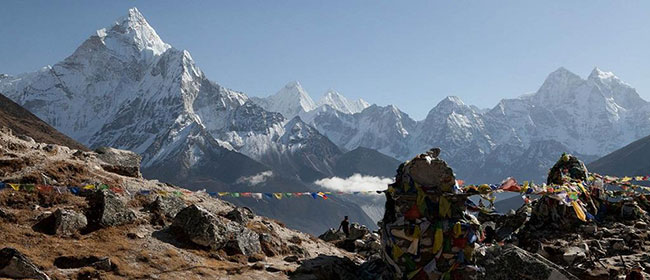Economic opportunities availed by China’s BRI could help make societies more conflict-resilient
In this era of global volatility, probability of crisis and conflict is further increased by the negative impact of climate change, environmental stress due to poor management of natural resources and limited economic prospects affecting the livelihoods of communities. One region where this is observed is the Himalayas. Water shortages and sudden changes in climatic conditions affecting agriculture lead to tensions in countries that share complex borders and trans-border eco-systems.
Among the most fragile and vulnerable ecological systems in the world today are the Himalayan glaciers. The river systems of China, South Asia, and Southeast Asia that flow from the Himalayan glaciers are the source of water and food for one half of humanity, and share eco-systems with Central Asia and the steppes of Mongolia. These areas are also among the least developed economically and in terms of attracting investments.
The importance of crisis prevention through both dialogue and action, focused on mitigation of climate disruption together with cultural and environmental protection of upstream and downstream communities, is both urgent and essential. Moreover, the opportunities of economic growth through China’s Belt and Road Initiative (BRI) are key to the creation of conflict-resilient socio-economic society. This will require increased dialogue and engagement between China and South Asia, as they need to develop closer ties and more understanding.
Govt announces 'Water from the Himalayas' program to brand moun...


Increasingly vulnerable
At the same time, Europe has witnessed the largest stream of refugees since World War II. A far worse scenario could arise if there is severe damage to glaciers and eco-systems of the Hindu-Kush Himalayan region, or other disasters with high impact on people’s livelihoods. Floods have displaced massive numbers of people in Pakistan, Nepal and Bangladesh this monsoon alone.
Given these increasing vulnerabilities, an innovative and integrated second-track crisis prevention, mitigation and conflict mediation approach is needed, one that promotes inclusive economic growth, establishes a system of early warning, direct facilitation and mediation of conflict, all supported by modern data analytics.
The Himalayan Consensus process is dedicated to the prevention of conflict and crisis by enhancing renewable energy and exploring efficient energy solutions for communities. This in turn will be achieved by addressing trans-boundary water challenges and the issues of water conservation, reuse and recycling. Community empowerment through adoption of heritage conservation business models, with emphasis on local participation, public-private partnerships and investments is also being tried. The creative use of global finance is also an essential component for community resilience and sustainability. Combined action on community’s economic empowerment and focus on culturally sustainable development will reduce the risk of conflict.
On November 14, 2017, the Himalayan Consensus Institute and UNDP Nepal forged a partnership to launch the Himalayan Consensus Initiative for Crisis and Conflict Mitigation. This initiative will have potentially far-reaching impacts that go beyond the borders of Nepal. It is envisioned that similar programs could be adopted across the developing world in an effort to address conflict at its root.
Stitch in time?
As such, the Himalayan Consensus is fully aligned with the Agenda 2030 and joins UNDP in promoting the achievement of the Sustainable Development Goals. Both organizations observe that the challenges, risks and required solutions to mitigating crisis and conflict call for a multi-disciplinary approach that is holistic, community-based and sustainable. For this it is vital to balance the three dimensions of sustainable development: economic, social and environmental.
The joint initiative will focus on developing systematic early warning systems to help governments and communities better prepare for emergencies; training of local mediators on the principle that community knows best; and second track dialogue through workshops that foster better understanding and identifies solutions acceptable to all.
The Himalayan Consensus Initiative for Crisis and Conflict Mitigation is also perfectly aligned with and contributes to the Agenda 2030 of the United Nations, the UN plan of action for people, planet and prosperity. Conflict can be reduced by embracing differences and diversity and linking them to livelihoods and environmental protection. We believe conflict arises with the marginalization of people’s economic rights and identity. Extreme marginalization, if unmanaged, can result in political extremism. Again, the long-term solution is to understand the problem and address it at its root.
Meyer is the UNDP Nepal Country Director and Brahm is Founder and Chair of the Himalayan Consensus



































